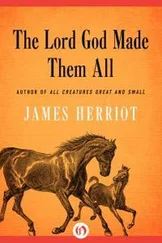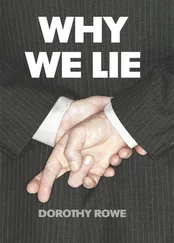A plateau only two hundred yards by a hundred and thirty wide doesn’t sound like much, he mused. Two ordinary football fields. But when you stand looking at it with a teaspoon in your hand and somebody says, “Dig!” the damned thing looks immense. He prayed to himself: So much depends on this. God help me to pick the right spot; but his attention was diverted from this problem when he noticed protruding from the earth a small object which did not look like a pebble. Bending over to inspect it, he found a small piece of lead, slightly flattened on one side. It was a spent bullet and he started to throw it away, but reconsidered.
“Voilà! Our first find on Tell Makor,” he said to himself. Spitting on his fingers, he cleaned the bullet until it lay dully, heavy in his hand. Holding it between thumb and forefinger, he asked himself, “Level? Age? Provenience?” thus using the bullet as an excuse for postponing his decision on the trenches. Taking from his briefcase an excavation card, he sat on the edge of the mound and filled it in with that exquisite, almost feminine, care he had always used in such work. The bullet had probably been fired from a British rifle, since they were the most common in these parts. Any recent date would be acceptable, but around 1950 A.D. was logical, since the bullet showed signs of aging, and he wrote that down; but he had no sooner done so than he erased the A.D. in some embarrassment and substituted C.E. He was working in a Jewish country which had formerly been a Muslim country, and here the use of Anno Domini was frowned upon; yet the world-wide system of dating had to be respected, and that required a Before Christ and an After Christ whether Muslims and Jews liked it or not, just as all longitude was measured from an English observatory near London, whether Anglophobes liked that or not. So Cullinane wrote his date 1950 C.E., which had originally signified Christian Era but which was now universally read as Common Era. Dates before Jesus were written B.C.E., Before the Common Era, and this satisfied everyone.
With precise pen marks he sketched the bullet and indicated its scale, 2:1, which meant that the drawing was two times as large as the original. Had the reverse been true he would have labeled it 1:2. Reviewing his playful entry, his Item One of the excavation, he was pleased to find his pen still accurate and added a neat J.C.
As Cullinane finished the final dot, he looked up to see that the most important member of his staff had arrived from Jerusalem and had climbed the tell to greet his colleagues. He was a tall, slender Jew, two years older than Cullinane, with deep-set eyes peering from beneath dark eyebrows. He had sunken cheeks but full lips that were eager to smile. His dark hair came well down onto his forehead and he moved with the grace of a man who had been both a soldier and a scholar. At present he worked in one of the government ministries in Jerusalem and was pleased with the invitation that would keep him at Makor from mid-May through mid-October, for he was a trained archaeologist whose political skills had been found so valuable to the government that he was rarely allowed out in the field. His position at Makor was ambiguous. Ostensibly he was to serve as chief administrator of the project, determining salaries, working hours and living arrangements. If he were not efficient, the complex personalities involved in the dig could waste their time in petty squabbles, if not outright feuds. He was hired to be the dictator, but no one at Makor would recognize this fact, for Ilan Eliav was a master administrator, a man who rarely lost his temper. He was probably the best-educated scholar in the expedition, speaking numerous languages, but his greatest asset was that he smoked a pipe, which he had a habit of rubbing in the palms of his hands until the complainant before him reached some kind of sensible decision without depending upon the intervention of Eliav. Workmen at previous digs had said, “I’m going in to see if the pipe will approve a raise.” And the kindly Jew with the deep-set eyes would listen as if his heart were breaking, and the bowl of his pipe would revolve slowly in his palms until the workman realized for himself how preposterous a raise would be at that time.
Actually Dr. Eliav was the official watchdog of the dig; the tells of Israel were far too valuable to allow just anyone to come in with a team of amateurs to butcher them. The nation contained more than a hundred unexcavated sites like Makor, and during the next two or three centuries teams from universities in Peking and Tokyo, or from learned societies in Calcutta or Cairo, would accumulate the necessary funds to dig out these long-forgotten cities, and it would be a disservice to humanity present and future if the sites were now abused. The problem was especially acute when archaeologists like Dr. Cullinane proposed to excavate by the trench method, for many crimes against history had been perpetrated in Israel by enthusiastic men with shovels who dug hasty trenches through improperly recorded levels. Normally the Israeli government would have rejected a trench proposal like Cullinane’s, but the Irish scholar had established such a good reputation, and he was known to be so well trained in archaeological matters, that in his case permission was granted; nevertheless, Dr. Eliav had been detached from his important desk job to be sure that the valuable tell was not mutilated.
He now strode across the top of the mound, extended a long arm to a man he instinctively liked, and offered an apology: “I am most sorry not to have been here when you arrived.”
“We’re fortunate to have you on any terms,” Cullinane said, for he knew why a scholar as important as Eliav had been released to work with him. If he had to accept a watchdog, he was pleased that it was to be Eliav; it was much easier to explain problems to a man who knew more than you did.
“I tried to break away last week,” Eliav explained. “I had three good days up here getting things organized, but they called me back. I want you to see the camp.” He led Cullinane to the western end of the plateau, where an ancient footpath led zigzag down the glacis toward an old rectangular stone building whose southern face was composed of three graceful Arab arches forming an arcade which led to four cool white rooms. The largest would be Cullinane’s office and the library; the others would house photography, ceramics and drafting.
“This looks better than I expected,” Cullinane said. “What was the building originally?”
Eliav pointed with his pipe stem to Tabari, who volunteered, “Probably the home of some Arab olive grower. Two or three hundred years ago.” Cullinane was impressed with the easy manner in which Tabari and Eliav worked together, showing none of the area’s traditional antagonism between Arab and Jew. They had co-operated on several previous digs and each respected the competence of the other.
“Out here are the sleeping tents, four of them,” Eliav continued, “and along this path lies Kibbutz Makor, where we’ll take our meals.” As he led the way to the communal agricultural settlement, Cullinane noticed the bronzed young men and women engaged in the work of the kibbutz. They were unusually attractive, and Cullinane thought: It took only a few years to change the hunched-up Jew of the ghetto into a lively farmer. Looking at the muscular young people, especially the free-moving women, he could not detect that they were Jews. There were blonds with blue eyes, and these looked like Swedes; there were blonds with square heads shorn flat, and these looked like Germans; there were redheads who looked like Americans; studious types who looked like Englishmen; and others who were sunburned to a near-black and who looked like Arabs. An average man, put amongst the lithe young people of Kibbutz Makor, would have been able to isolate only about ten per cent who looked like his preconception of a Jew, and one of them would have been Jemail Tabari, the Arab.
Читать дальше

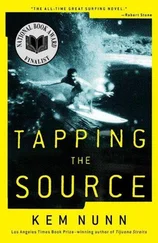



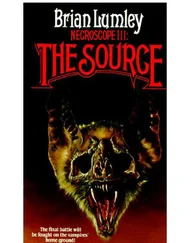
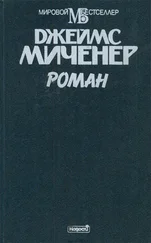

![Джеймс Купер - Пионеры, или У истоков Саскуиханны [The Pioneers, or The sources of the Susquehannah]](/books/395797/dzhejms-kuper-pionery-ili-u-istokov-saskuihanny-t-thumb.webp)
